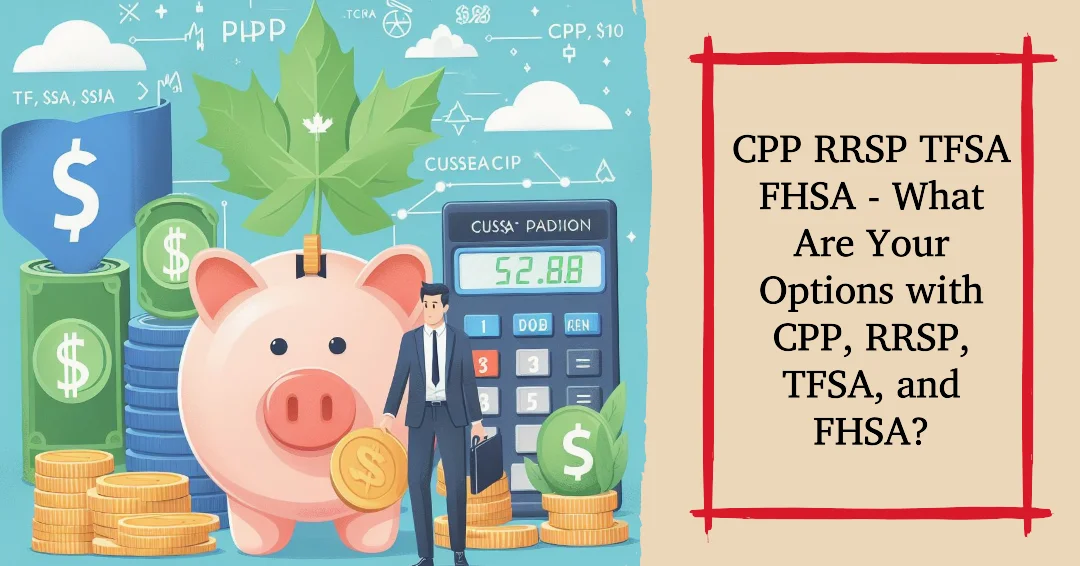For Advertising Contact Us
CPP RRSP TFSA FHSA – What Are Your Options with CPP, RRSP, TFSA, and FHSA?

RRSP, CPP, TFSA, and FHSA are vital financial tools that can help you save for retirement and achieve your financial goals. Understanding the differences and benefits of each option is crucial in making informed decisions about your financial future. In this blog post, we will explore the various options available with CPP, RRSP, TFSA, and FHSA, and help you navigate the complexities of these investment vehicles to maximize your savings and secure a comfortable retirement.
Understanding The Canada Pension Plan (CPP)
Eligibility and Contributions
Pension eligibility for the Canada Pension Plan (CPP) is based on your contributions to the plan throughout your working years. To qualify for CPP benefits, you must have made contributions to the plan for at least four years. Contributions are typically deducted automatically from your paycheck if you are employed, with both you and your employer contributing to the plan.
Benefits and Payout Structure
An integral part of your retirement plan, the Canada Pension Plan (CPP) offers a monthly payment to eligible participants when they reach the age of 65. This payment is calculated based on your total contributions to the plan and the number of years you have made contributions. The amount of your CPP retirement pension can vary based on factors such as your earnings history and the age at which you start receiving benefits.
Benefits from the CPP are designed to provide a reliable source of income during your retirement years, helping to supplement any other pensions or savings you may have. The CPP payout structure is set up to ensure that participants receive a steady stream of income once they start receiving benefits, providing a measure of financial security in retirement.
The Registered Retirement Savings Plan (RRSP)
How RRSPs Work
Plan It: The Registered Retirement Savings Plan (RRSP) is a tax-advantaged investment account designed to help Canadians save for retirement. Contributions to an RRSP are tax-deductible, meaning they can lower your taxable income and result in a tax refund. The money in an RRSP can be invested in a variety of assets such as stocks, bonds, GICs, and mutual funds to grow tax-deferred until withdrawal.
Tax Implications and Withdrawal Rules
Implications: Concerning RRSPs, it’s crucial to understand the tax implications and withdrawal rules. Contributions to an RRSP are tax-deductible, but withdrawals are considered taxable income. There are also rules around when and how you can withdraw money from your RRSP, including the Home Buyers’ Plan and the Lifelong Learning Plan, which allow for tax-free withdrawals for specific purposes.
Avoiding early withdrawals before retirement can help maximize the tax benefits of an RRSP and allow your investments to grow over time. It’s crucial to have a solid understanding of these rules to make the most of your RRSP savings for retirement.
The Tax-Free Savings Account (TFSA)
Fundamentals of the TFSA
Keep in mind that the Tax-Free Savings Account (TFSA) is a versatile investment tool that allows Canadians to earn tax-free investment income. Contributions are not tax-deductible; however, any growth, dividends, or interest earned within the account are tax-free, making it a valuable component of your investment portfolio.
Investment Options and Flexibility
To make the most of your TFSA, you have a range of investment options and flexibility. From high-interest savings accounts and Guaranteed Investment Certificates (GICs) to stocks, bonds, mutual funds, and exchange-traded funds (ETFs), there are various ways you can grow your savings tax-free within a TFSA.
Account holders can rebalance their portfolio, trade securities, and reinvest dividends without triggering any tax consequences, providing a level of flexibility not seen in other registered accounts.
The First Home Savings Account (FHSA)
Despite the numerous investment options available to Canadians, the First Home Savings Account (FHSA) is a unique savings vehicle specifically designed to help individuals save for their first home purchase. Established by the Canadian government, the FHSA provides tax incentives for Canadian residents who are looking to save for their future home.
One of the key benefits of the FHSA is that contributions made to the account are not taxed. This means that any money you deposit into your FHSA can grow tax-free over time, helping you reach your savings goals faster. Additionally, the government also provides matching contributions to your FHSA, further boosting your savings potential.
Another advantage of the FHSA is that the funds can be used towards the down payment of your first home. This can be particularly beneficial for individuals who may be struggling to save enough for a down payment, as the FHSA can provide a significant financial boost towards achieving home ownership.
It is important to note that there are eligibility criteria and contribution limits associated with the FHSA. Canadians who are looking to open an FHSA should familiarize themselves with these requirements to ensure they make the most of this savings opportunity.



